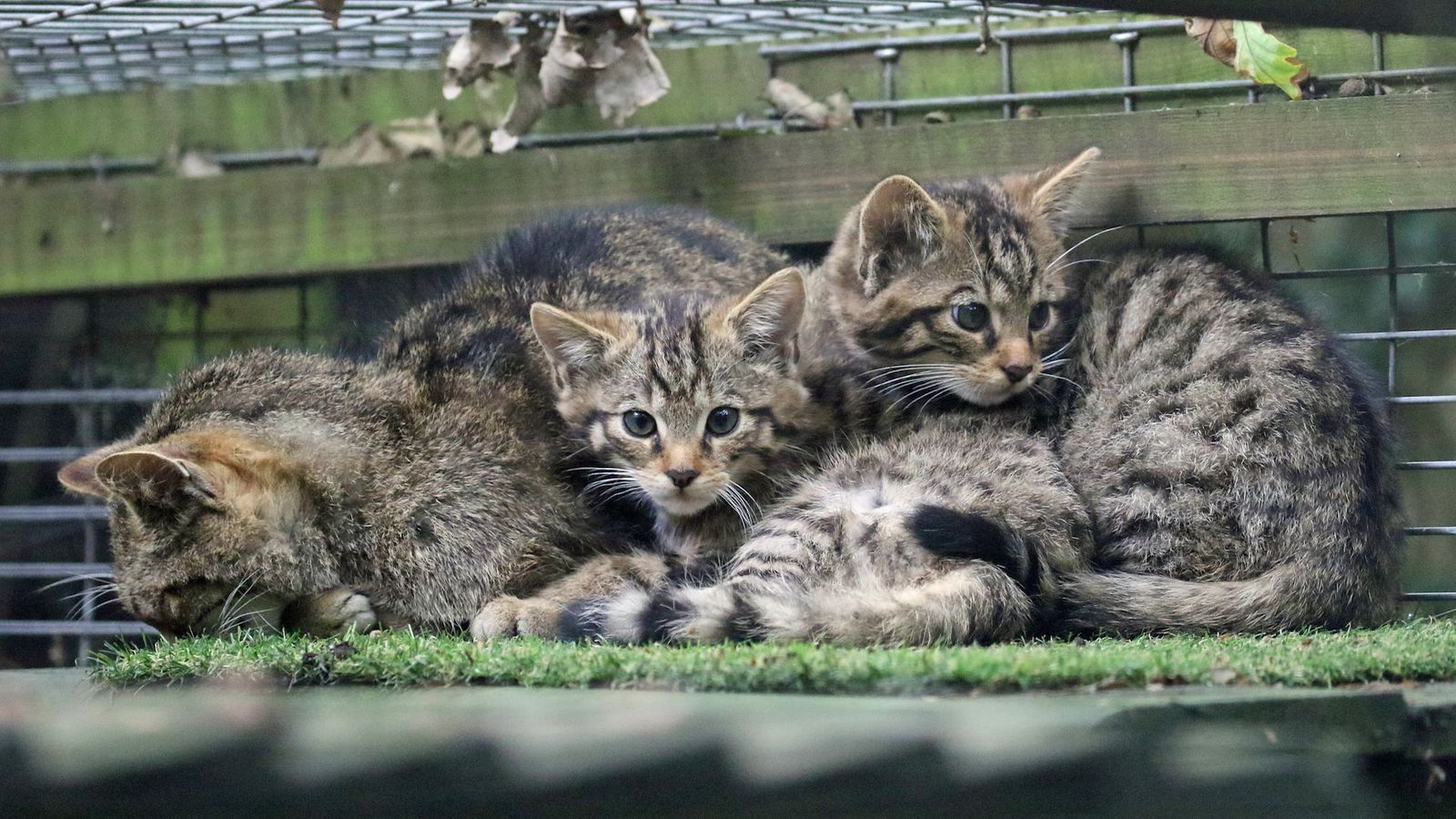A breeding programme could see Britain’s rarest mammal released into the wild to create the first population outside Scotland in more than 200 years.
Conservationists have started building breeding facilities in Kent and Devon as part of a nationwide effort to save wildcats from extinction.
The furry animals are the only native cat species surviving in Britain, with a small population still roaming the Scottish Highlands.
But with less than an estimated 300 individuals left, the population has been declared “functionally extinct”.
Now, a number of conservation charities have started work on 10 new enclosures at their parks in a bid to secure the future of the endangered species.
Sally Holt, senior wildcat keeper at Wildwood Trust in Herne Bay, Kent, highlighted the importance of the facilities, as the “breeding of this secretive species can be challenging”.
Genetics project aims to ‘resurrect’ woolly mammoths within the next six years
Badger cull: Thousands to be put down in seven new areas across England as government battles bovine TB
Leopard attacks model during photoshoot inside big cat enclosure in Germany
She said: “Off-show breeding enclosures will create a quieter environment and will help kittens develop key survival behaviour.
“Wildcats have very particular den box preferences, so we have worked hard with researchers to find the right design for the new enclosures. It will be so exciting to see all this work come to fruition.”
Rangers at the park are currently clearing ground for the breeding centre, which will be built set back from the main area to ensure the welfare of the animals and their young.
Each enclosure will house a pair of cats, whose kittens will later be released into the wild.
Wildwood Trust claims a healthy population of reintroduced wildcats will help to restore balance in the ecosystem by controlling numbers of prey animals such as rabbits and rodents, and of predators such as foxes through competition for food.
Director of conservation at the trust, Laura Gardner said: “As a charity which has successfully bred wildcats at our parks, we see first-hand how much people enjoy visiting them, so helping create a world where they will live side-by-side with us again will be incredible to witness.”
The project also involves Durrell Wildlife Conservation Trust and Vincent Wildlife Trust.






















